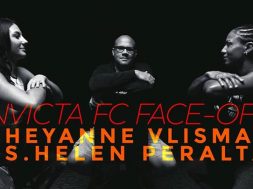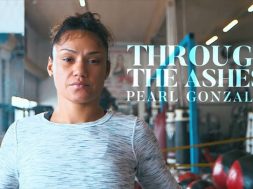Bruce Lee: A Global Cultural Icon
Bruce Lee: A Global Cultural Icon
By Jarryd O’Keefe
Bruce Lee is a global cultural icon whose life had a significant impact on the history of martial arts, the artistic field of cinema and cultural society. Lee made history in the martial arts industry by fighting for equality for the teachings of all nationalities and founding a new martial art style. Lee was a pioneer of cinema credited for bringing the Asian martial arts genre to international audiences. Since Lee’s passing over forty years ago at the age of thirty-two, Lee’s legacy in the martial arts and film industries, along with his philosophical writings have inspired generations of people from around the world influencing modern culture and turning Lee into a significant global icon.
Bruce Lee is a global cultural icon based on the impact of the historical developments he made within the martial arts industry. Lee founded the martial art school, Jun Fan Gung Fu Institute teaching students of all races. Lee was challenged by a group of traditional gung fu men who objected to the teaching of non-Chinese students. He accepted the challenge to a fight. The terms were that if he were defeated the consequences were to close down the school and stop teaching non-Chinese students. The fight did not last long with Lee winning convincingly, however he was disappointed in his personal performance and sought to improve his individual fighting style (Thomas 1997, pp. 70-71). In Lee’s pursuit to improve fighting techniques a new martial art style evolved, which he named Jeet Kune Do (Bruce Lee Foundation 2006, p. 5), Jeet Kune Do was a culmination of styles and developed from nineteen years of martial arts knowledge. Lee taught Jeet Kune Do to the students at the Jun Fan Gung Fu Institute many of which are still teaching the style all over the world today (Thomas 1997, p. 298). The evidence suggests that Lee impacted the field of martial arts by fighting for equality of teaching students regardless of race, furthermore creating a martial art style which is still taught and practiced all over the world.
As well as the martial arts industry, Lee impacted the artistic field of film making as a pioneer in the martial arts film genre by bringing Asian martial art films to the attention of international audiences (Catania 2006). Hong Kong based production company The Golden Harvest offered him a two-picture contract. Lee’s first two martial art films The Big Boss and Fists of Fury broke box office records. He then wrote, produced, directed and starred in The Way of The Dragon which broke more records and peaked Hollywood’s interest (Bruce Lee Foundation 2006, pp. 8-9). Ahmed (2001) writes as the Bruce Lee phenomenon started to grow Raymond Chow President of Golden Harvest came to a mutual agreement with US film company Warner Bros. to co-produce Enter the Dragon starring Lee in the lead role. The film became the highest grossing Asian/American co-production to that date and turned Lee into an international star. Unfortunately Lee would not live to see the film’s Hollywood premier and the success that followed due to a hypersensitive reaction to an ingredient in a painkiller that caused a swelling on the brain, resulting in a coma and ultimately his untimely death (Bruce Lee Foundation 2006, p. 9). Catania (2006) suggests that ‘Lee essentially pioneered the Asian martial arts film industry and was responsible for bringing the genre to the attention of international audiences’. As outlined Lee’s impact on filmmaking as a pioneer in the martial arts genre is evidenced in the international success of the films mentioned.
Lee’s legacy left a lasting impact on cultural society, which caused him to become a global icon. After his death Asian cinema spawned a flux of Lee imitators including Jackie Chan who became an international box office star by creating a persona that inverted Lee’s strong image. Chan describes Lee’s influence: ‘Instead of kicking high like Bruce Lee, I kick low. He plays the invincible hero, I’m the underdog. His moves are intense, mine are light’ (Ahmed 2001). Lee did a lot of philosophical writing most notably the book Tao of Jeet Kune Do, which has been published sixty eight times and sold more then seven hundred and fifty thousand copies in nine different languages (Lee 2011). Lee was an inspiration to many people from various backgrounds as suggested here by Catania (2006) ‘The cultural themes inherent in Lee’s films seemed to appeal to the sensibilities of America’s youth culture in the 1970’s’. Former World Champion boxer Mike Tyson mentions how Lee’s philosophies blew him away: “His Philosophy is like the ultimate warrior philosophy” (Tyson 2015). Thomas (1997) further highlights Shanlon Wu an inspired fan describes ‘I was fourteen years old when I first saw Enter the Dragon. Between the ages of fourteen and seventeen, I saw Enter the Dragon twenty-two times. I collected Bruce Lee posters, I took up martial arts and spent hours comparing my physique with Lee’s’. From the evidence it is clear that Lee’s legacy influenced and inspired many people globally, thereby impacting cultural society and becoming a global icon.
In conclusion Lee’s impact on the history of the martial arts industry, the artistic field of cinema and global significance on cultural society as an icon has been outlined. Lee impacted the history of the martial arts industry by fighting for the right to teach martial arts students of all nationalities at the Jun Fan Gung Fu Institute, as well as revolutionizing martial arts by creating the new style of Jeet Kune Do which is still taught all over the world. He also impacted the artistic field of cinema pioneering the Asian martial arts genre by bringing Asian martial arts to the attention of international audiences. Lee has impacted cultural society by influencing countless martial artists and actors who credit him as their inspiration for taking up the sport. His famous philosophical thoughts live on through his published works. Culminating in his legacy continuing to inspire and live on for many more generations to come making Lee a significant twentieth century global cultural icon.
About the Author:
Jarryd O’Keefe is a mixed martial artist specializing in Brazilian Jiu Jitsu, Muay Thai and Jeet Kune Do. He previously studied Karate when he worked as a Self-defense consultant for Go-Kan-Ru Karate International in 2010. Jarryd graduated with honors in L&L (literacy) from T.A.F.E. Brisbane. He is currently a full time university student studying screen and media production at SAE creative media institute in Brisbane, Australia.
References
Ahmed, S 2001, ‘WHAT’S TAKEN SO LONG?’, Metro, 129/130, p. 188, viewed 22 February, 2015, Australia/New Zealand Reference Centre, EBSCOhost.
Bruce Lee Foundation 2006, Bruce Lee Biography, viewed 19 February 2015, <www.brucelee.com/bruceleecom/file/biography.pdf>.
Catania, J 2006, Enter the (Diaspora) Dragons: MARTIAL ARTS CINEMA AND GLOBALIZATION. Metro, 148, p. 96-99, viewed 22 February, 2015, Australia/New Zealand Reference Centre, EBSCOhost.
Lee, B 2011, Tao of Jeet Kune Do, Black Belt Communications LLC, Valencia.
Thomas, B 1997, Bruce Lee Fighting Spirit, Pan Macmillan Ltd, London.
Tyson, M 2015, Mike Tyson on Bruce Lee’s JKD influence. 13 February 2015, viewed 7 March, 2015, https://www.youtube.com/watch?v=BcneH4Vj9pQ
(41)


